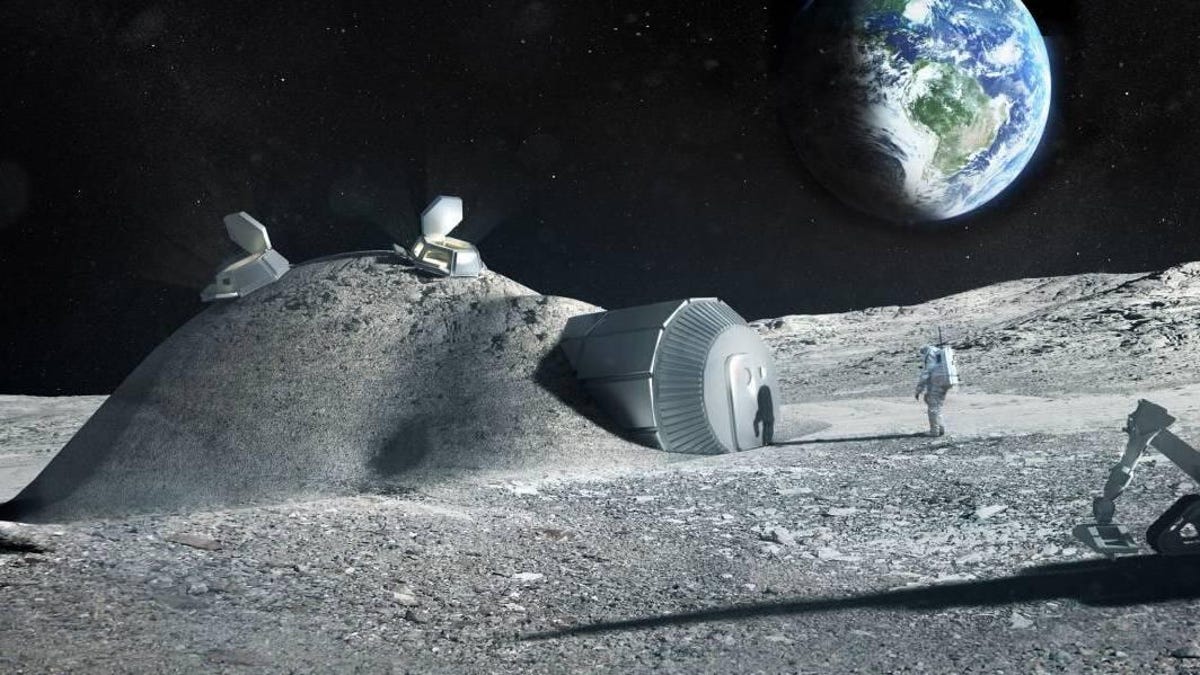Astronauts could use their own pee to build future moon habitats
Scientists mix urea from urine with a moon soil substitute to make surprisingly sturdy 3D-printed structures.

This ESA illustration shows what a future lunar habitat might look like.
NASA and other space agencies are obsessed with the moon, and not just for a quick visit. They want to stay. But if humans are going to live on the lunar surface, we're going to need shelters. And those future shelters might just be made from a mix of urine and local soil.
It would be much cheaper to build moon habitats using local resources rather than shipping building components across space. An international team of scientists working with the European Space Agency looked into mixing urea, a component of urine, with lunar material to create a type of moon concrete.
The team used a 3D printer to generate cylinders of material made from moon regolith substitute combined with urea, said SINC, the news agency of the Spanish Foundation for Science and Technology, in a statement on Friday.
The early results were promising. The 3D-printed tubes of the urea mixture "supported heavy weights and remained almost stable in shape," SINC reported. "Once heated to 80 degrees Celsius (170 degrees Fahrenheit), their resistance was also tested and even increased after eight freeze-thaw cycles like those on the moon."
These 3D-printer cylinders were made from urea mixed with a lunar regolith substitute.
The team published its findings in February in the Journal of Cleaner Production. The researchers called for further study into how well the material would withstand the harsh conditions of the moon.
Scientists have already been investigating other uses for astronaut waste. Researchers from Clemson University looked into using yeast, urine, and carbon dioxide from astronauts' breath to potentially make tools. Penn State scientists found a way to turn microbes and feces into something edible.
Our future space explorers will be champions of recycling.

